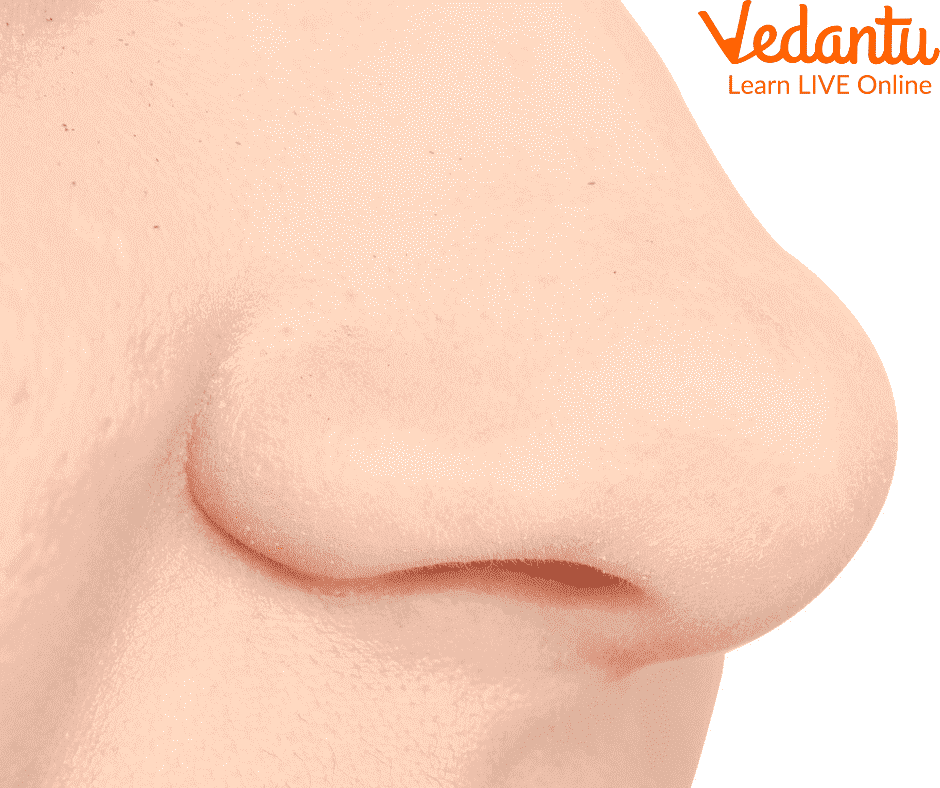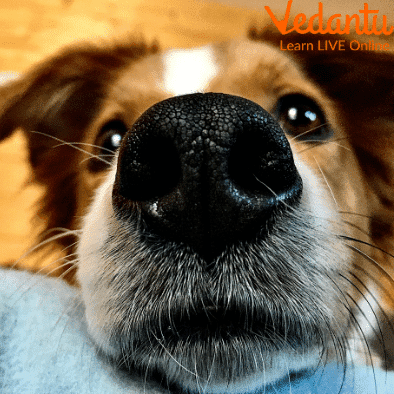




Why Is the Nose Important? Key Functions and Cool Facts
Have you ever wondered how you can smell a freshly baked cake made by your mother or your smelly clothes covered in sweat after playing? Yes, you can smell these because of your nose. In humans, the nose is located in the middle of the face above our mouth.
Our nose is a wonderful part of the human body and it helps us to smell different kinds of odours. Not just this, our nose is also a gate to our respiratory system as it helps us in breathing. Let’s be nosey and find out some more interesting facts about the nose through these 5 sentences about nose for kindergarten.
The Nose Is a Passageway for the Air We Breathe
The nose has two holes called nostrils. These nostrils are a gateway to the nasal cavity. Two nasal cavities in our nose carry the air to go in and out of our bodies. The nostrils and nasal cavity are separated by a wall called the septum. The shape of the nose comes because of the bones and cartilage that make up the nose. The bone in the nose supports the bridge of the nose. The upper cartilage helps to provide support to the side of the nose while the lower cartilage provides the width and height of the nose. Here you can see the nose images for kids.

Image of a Nose
Alveoli in Our Lungs Separate Oxygen from the Air
The air around us enters our body through our nose. It goes to the nostril and with the help of the windpipe, the air travels to bronchi tubes in our lungs. The bronchial tubes become smaller and smaller just like the root of trees. At the end of bronchial tubes, there are small air sacs called alveoli which allow the oxygen into the air to pass through it into the red blood cells. What happens then to the leftover air in alveoli? That air is exhaled out from our bodies. Here we can see human nose clipart for kids represented with the lines in the below image.

A Person Breathing in Air
Our Nose also Removes Impurities from the Air for Us
Your nose is more than just a pathway for air to go in and out of your body. The nose also warms, moistens, and filters the air before it goes to the lungs. The nasal cavity of your nose is lined with a thin layer of tissue. This tissue is called mucous (pronounced: MYOO-kus ). It warms up the air and moisture and also traps dust and germ particles that can irritate your lungs.
Inside your nose, you can also see some hairs that trap those dust particles. Blockages or irritation in the nasal passages can make breathing and smell difficult. Example: Colds, allergies, infections, and pollutants in the air as well as injuries to the nose also can cause breathing problems. Then what happens when those dust particles get trapped in your nose? Yes, you guessed it right you sneeze. Sneezing sends back these dust particles out of your body. Isn’t it amazing to see how such a small organ can do so many wonderful things? What other important function of the nose can you think of? Yes, it’s smelling. Let's understand how we smell things.
Our Brain Differentiates between Good and Bad Smell
When the air around us travels through our nose, it brings some sort of scent with it. Our noses have millions of nerve endings that are very sensitive. These nerve endings catch the smell and send the signal to the brain. The brain processes the information whether the smell is good or bad.
Some Other Animals Can Smell Better Than Us
Have you ever wondered why dogs sniff everything or how they already know that you are about to come home and wait at the gate for you? This is because dogs and some other mammals have a strong sense of smell which they use to find food, mates, and territories. On the other hand, some mammals do not have a good sense of smell, like a whale, which has a blowhole for breathing. Some types of whales can smell through the blowhole, but others cannot.

Image of a Dog's Nose
Birds, reptiles, amphibians, and fish have nasal openings that allow them to smell. Some reptiles have an extra smelling organ on the roof of the mouth.
Summary
So, to summarise we have learnt that the nostrils and nasal cavity are separated by a wall called the septum. These nasal cavities are filled with mucus and nerve cells. The air around us goes to the nostril and with the help of a windpipe that is in our throat the air travels to our lungs. The nose also warms, moistens, and filters the air before it goes to the lungs with help of mucous. Blockages or irritation in the nasal passages can make breathing and smell difficult. Sneezing sends back the dust particles out of our body.
FAQs on Top 5 Amazing Facts About the Human Nose
1. Why do I have difficulty breathing sometimes?
There are many reasons for breathing difficulties. While most people face breathing difficulties when they get a cold, some other breathing difficulties are because of sinusitis. Sinusitis is a condition in which cavities around the nasal passage get inflamed. The nasal passage is a pathway for viruses and allergens to enter your lungs. So the nose and sinuses are often associated with many lung disorders. A sinus or nasal passage inflammation may trigger reflexes and can even cause asthma attacks
2. How can dogs smell things that humans may find difficult to smell?
Dogs have more powerful noses than humans as a dog’s sense of smell is much stronger than humans. Under perfect conditions, they can smell objects or people as far as 20 km away. This is because dogs have many more smell receptors than humans – a receptor is a part of the nose that recognises each unique smell particle.
Dogs also have a lot more surface area in their noses and are better at moving air through their noses than we. This is why our pet dogs know that we have reached home and wait at the door for us.
3. What is the correct way to breathe from the nose for kids?
There are two ways to breathe— through your mouth and your nose. When we breathe through our nose, the nostrils filter warm and humidify the air in a way that the mouth cannot. Apart from this, the nose also captures the dirt from the surroundings and doesn't let them enter our body. But at times, breathing through your mouth is necessary (increased physical activity, sinus congestion). If we talk about the correct way of breathing then breathing in through your nose helps, especially in a very dry or cold environment.





















